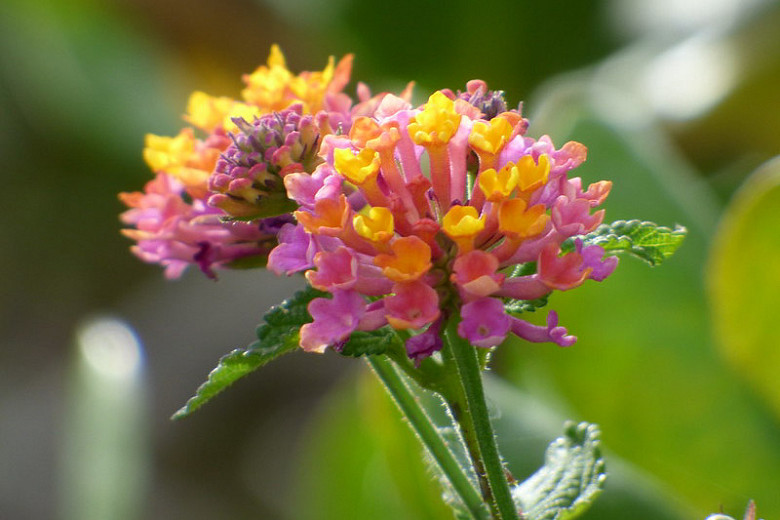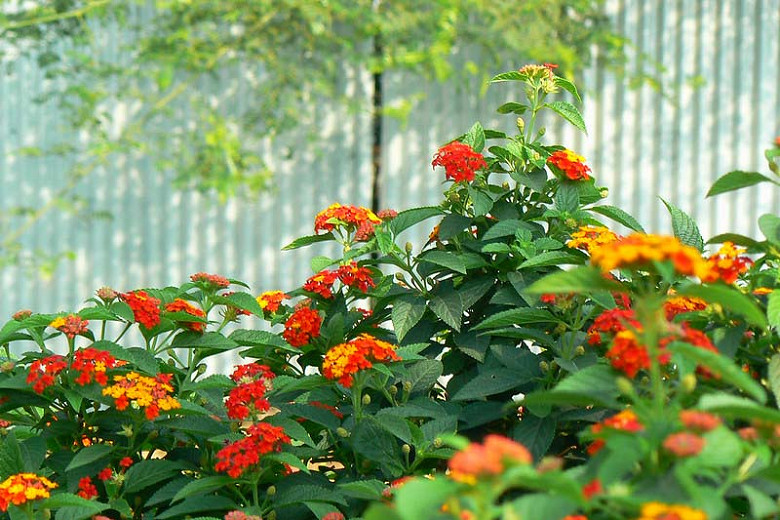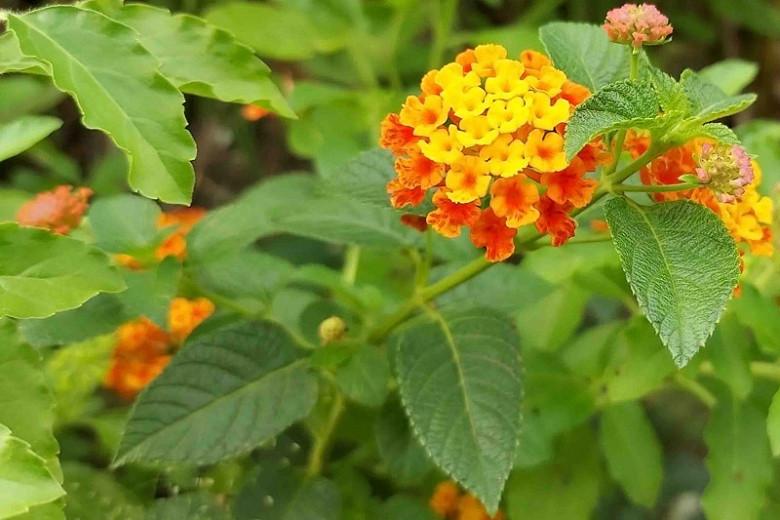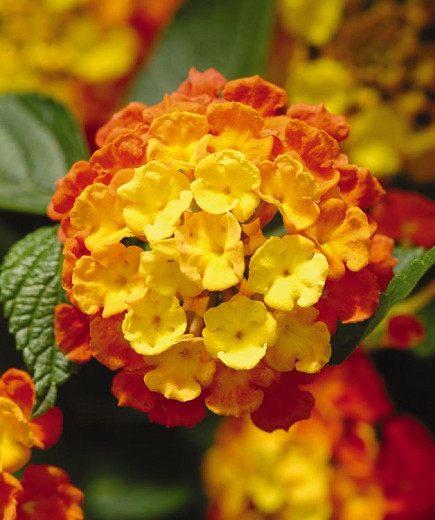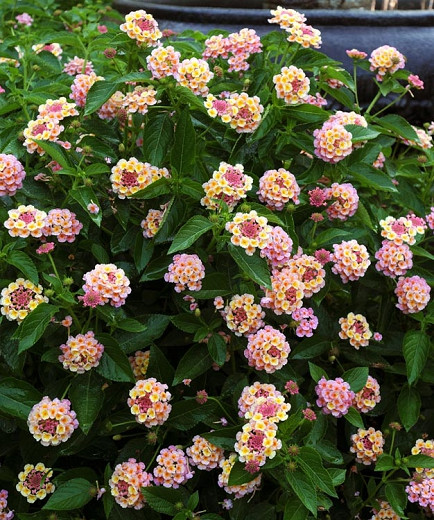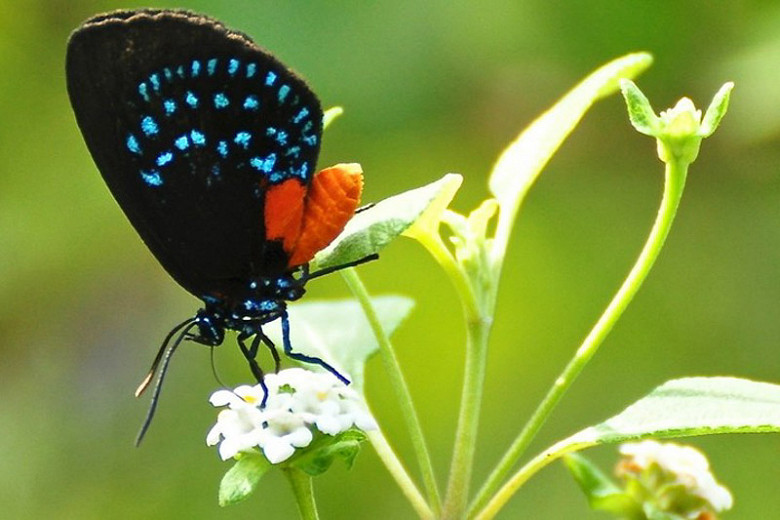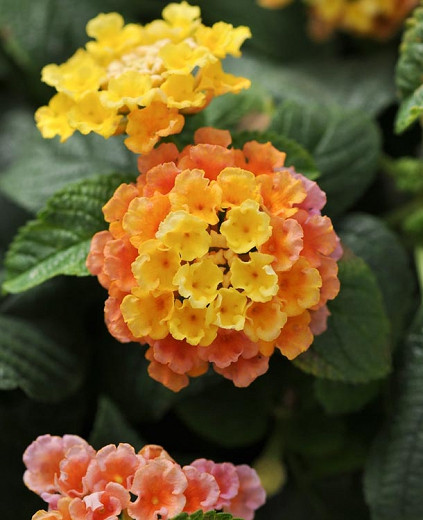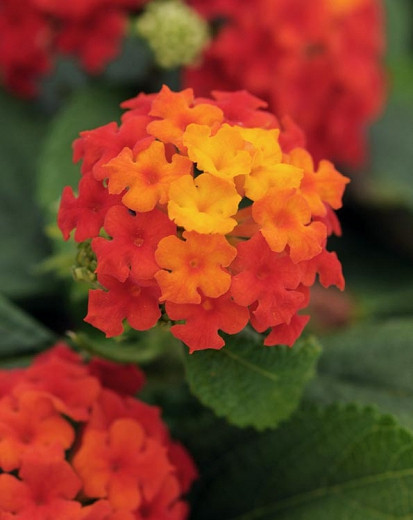Lantana camara (Bigleaf Lantana)
Vigorous, Lantana camara (Bigleaf Lantana) is a sun-loving evergreen shrub forming a large bushy mound of wrinkled, ovate, toothed, dark green leaves. The leaves are aromatic when bruised. Blooming continuously from late spring through frost (nearly year-round in warmer climates), a profusion of brightly colored flower clusters, 2 in. wide (5 cm), cover the foliage. They are packed with tiny, salver-shaped flowers in cheerful shades of white, yellow, orange, red and purple, often mixed in the same cluster. The blossoms attract butterflies, hummingbirds, and insect pollinators. The flowers give way to small inedible dark purple berries. One plant can produce up to 12,000 fruits which are then eaten by birds and small mammals or spread over large distances, facilitating the spread of Lantana camara. Tough, relatively carefree, Bigleaf Lantana is a resilient plant valued for its long season of reliable bloom, its ability to last for a relatively long time without water, and the fact that it does not have many pest or disease issues. Many cultivars and hybrids are available, including dwarf and trailing plants.
- Grows up to 2-6 ft. tall (60-180 cm) and 3-10 ft. wide (90-300 cm) where perennial. Will grow up to 3-4 ft. tall (90-120 cm) and 1-3 ft. wide (30-90 cm) where treated as an annual.
- Easily grown in average, medium moisture, well-drained soils in full sun. Lantana is tolerant of all soil types (including poor soils) provided they are well drained and slightly acid.
- Thrives in extreme heat, humidity and drought. Lantana is salt tolerant, making it an excellent choice for plantings near the beach.
- Deer resistant
- Great for beds and borders, wall-side borders, banks and slopes, cottage gardens, coastal gardens, Mediterranean gardens or in containers. Excellent groundcover in frost-free climates.
- No serious pest or disease issues. May be subject to powdery mildew if grown in shade. Root rot can be a problem if the soil is poorly drained or plants are watered too frequently. Mites can be a problem, especially if plants are very dry.
- Prune back plants after flowering to shape and to encourage additional bud growth.
- Can be harmful to children, pets, and livestock. The leaves can cause brief skin irritation or a rash. Highly toxic if ingested.
- Toxic to dogs, toxic to cats, toxic to horses.
- Lantana camara species is native to Central and South America. It has been introduced to most of the tropics and subtropics as a hedge plant and has since been reported as extremely weedy and invasive in many countries. In addition to this, it increases the risk of fire, is poisonous to livestock and is a host for numerous pests and diseases.
- Find where this species is invasive in the United States.
- Discover beautiful U.S. native plant alternatives.
Requirements
| Hardiness | 10 – 12 |
|---|---|
| Heat Zones | 1 – 12 |
| Climate Zones | 8, 9, 10, 12, 13, 14, 15, 16, 17, 18, 19, 20, 21, 22, 23, 24, H1, H2 |
| Plant Type | Perennials, Shrubs |
| Plant Family | Lantana |
| Exposure | Full Sun |
| Season of Interest | Spring (Late)Summer (Early,Mid,Late)Fall |
| Height | 2' – 6' (60cm – 180cm) |
| Spread | 3' – 10' (90cm – 3m) |
| Water Needs | Average |
| Maintenance | Low |
| Soil Type | Chalk, Clay, Loam, Sand |
| Soil pH | Acid, Alkaline, Neutral |
| Soil Drainage | Moist but Well-Drained |
| Characteristics | Showy, Evergreen |
| Tolerance | Deer, Drought, Rabbit, Salt |
| Attracts | Butterflies, Hummingbirds |
| Garden Uses | Banks and Slopes, Beds and Borders, Ground Covers, Patio and Containers, Wall-Side Borders |
| Garden Styles | Coastal Garden, Informal and Cottage, Mediterranean Garden, Prairie and Meadow |
